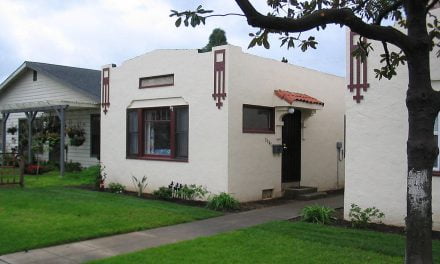This article presents the notices to vacate used by landlords and tenants to terminate month-to-month tenancies, other than by use of a 3-day notice to quit.
Termination of periodic tenancies
A tenant enters into occupancy of a single-family residential property under a lease agreement obligating the tenant to maintain the property’s landscaping.
The landlord soon receives complaints from surrounding property owners about excessive noise and a high number of visitors at the property late at night. On more than one occasion, the police have responded to calls from neighbors regarding the noise. Also, the city ordinance compliance department has given notice for the removal of disabled vehicles from the property. On a drive-by inspection, the landlord discovers the landscaping and lawn have deteriorated since the tenant has not watered.
Although the tenant consistently pays the rent on time, the landlord feels the tenant must be evicted even though several months remain on the term of the lease. The tenant is creating a nuisance by interfering with his neighbors’ use and enjoyment of their property and waste by failing to maintain the leased premises, both are justification to terminate the tenancy.
The landlord prepares and serves the tenant with a notice to vacate to avoid stating his reasons for terminating the tenancy. [California Civil Code §1946; see Form 569 accompanying this chapter]
The tenant remains in occupancy of the premises after the notice expires and tenders the next rent payment on time. The landlord refuses to accept the rent payment and files an unlawful detainer (UD) action to evict the tenant.
Can the landlord, subject to an unexpired lease that the tenant has breached, evict the tenant from the premises with a notice to vacate?
No! The tenant occupies the property under an unexpired lease. The landlord cannot terminate the tenant’s right to possession by using a notice to vacate, much less use the notice to vacate to establish an unlawful detainer when an unexpired lease exists.
A residential or nonresidential notice to vacate the premises is only effective when used by a landlord or tenant to terminate a periodic tenancy, such as a month-to-month tenancy or a continuing occupancy after a lease expires.
The term of the periodic tenancy being terminated (weekly, monthly, annually) does not matter, unless:
· the property is residential and the tenant has occupied the premise for one year or more, in which case the landlord, not the tenant, must use a 60-day notice to vacate [Calif. Civil Code §1946.1; see first tuesday Form 569.5 accompanying this chapter]; or
· the property is nonresidential and the rental agreement calls for a greater or lesser period for notice, but not less than seven days. [CC §1946]
If agreed, a provision in a residential or nonresidential lease agreement may allow the tenant to terminate his occupancy prior to expiration of the lease on 30 days’ notice, or any other period for notice, conditioned on the payment of a penalty for canceling the lease agreement and vacating prematurely, sometimes called a cancellation provision.
Periodic tenancies extended/terminated
Unlike the extension of a lease, the 30-day rental period under a month-to-month rental agreement is automatically extended for the same period and on the same terms, until the right to extend is terminated by a 30-day notice to vacate.
However, if the property is residential and the tenant has resided on it for one year or more, then the landlord (not the tenant) is required to give the residential tenant a 60-day notice to vacate. [CC §1946; see Form 569.5]
Any landlord under a month-to-month rental agreement (or for any other period) may interfere at any time with the automatic renewal of the rental agreement and terminate the tenancy by serving a notice to vacate on the tenant.
Likewise, any tenant under a month-to-month rental agreement may at any time stop the automatic renewal process and terminate the tenancy by giving the landlord a 30-day notice of the tenant’s intent to vacate the premises. [CC §§1946, 1946.1; see Form 572 accompanying this chapter]
A notice to vacate on a month-to-month tenancy, whether given by the tenant or the landlord, establishes a tenant’s unlawful detainer (UD) when it expires and the tenant remain in possession. [Palmer v. Zeis (1944) 65 CA2d Supp. 859]
Once the notice to vacate expires and the tenant does not vacate, the landlord may file a UD action to evict the month-to-month tenant without further notice. [Code of Civil Procedure §1161(5)]
Lease becomes a periodic tenancy
Consider a tenant entering into a one-year lease of a unit in a residential or nonresidential building. After expiration of the lease, the tenant remains in possession of the unit, an unlawful detainer of the premises. However, the tenant continues to pay rent monthly, which the landlord accepts.
Later, the landlord serves the tenant with a 60-day notice to vacate the property and the tenant refuses. The landlord files a UD action to evict the tenant.
The tenant claims he cannot be evicted based on a 60-day notice to vacate since he holds possession of the unit under a lease agreement, which was automatically extended for the same period as the term of the original lease when the landlord accepted rent after the lease expired.
Here, the 60-day notice to vacate is effective to terminate possession and the tenant can be evicted. The landlord’s acceptance of monthly rent after the lease expired, when the lease agreement does not provide the tenant with an option to renew or extend the lease, establishes a month-to-month tenancy on the same conditions stated in the lease agreement. [CC §1945]
Landlord’s intent to evict
A landlord, residential or nonresidential, terminates a month-to- month tenancy by preparing and serving the tenant with a notice to vacate. However, if a material breach exists in the payment of amounts due or performance of provisions in the occupancy agreement, a 3-day notice to quit is used. [See first tuesday Forms 575 and 576; see Chapter 25]
· the name of the tenant;
· the address of the premises;
· a reference to the rental agreement or expired lease;
· a statement that the unit must be vacant within the applicable number of days (30 or 60) after service of the notice;
· the dollar amount of pro rata rent to be paid when rent is next due;
· a statement regarding the security deposit and its disposition; and
· a statement informing the tenant of his right to request a joint inspection of the premises in order to avoid deductions from his security deposit.
A forfeiture provision is not properly included in any notice to vacate since no right to possession exists to be forfeited on expiration of the rental agreement — the tenancy terminates by its own terms when the notice expires.
Due to its contents, the landlord’s notice to vacate eliminates any confusion as to the amount of pro rata rent to be paid and when the rent is due. [See Form 571 §3]
Tenant’s intent to vacate
A tenant, residential or nonresidential, who intends to vacate and avoid further liability under a month-to-month rental agreement or expired lease must give 30 days advance notice to the landlord of the tenant’s termination of the tenancy. The notice may be in the form of a letter personally delivered to the landlord or his agent, or sent by certified or registered mail. [CC §§1946; 1946.1]
Some landlords are willing to accept oral notice of the tenant’s intent to vacate without reducing the notice to a writing signed by the tenant.
However, both the tenant and the landlord are better served when the landlord hands the tenant a 30-day Notice to Vacate form when entering into a rental agreement or, at worst, when the tenant gives oral notice of his vacating the space. The tenant will then have the correct paperwork to complete and deliver documentation to the landlord or property manager. Use of a form lends certainty to the tenant’s understanding of a critical event. [See Form 572]
A tenant’s 30-day notice to vacate acknowledges:
· the tenancy is terminated on expiration of 30 days after service of the notice on the landlord or his manager;
· the tenant’s intent to pay pro rata rent;
· the amount of the security deposit and the tenant’s right to request a pre-termination inspection and receive an itemized statement of maintenance and cleaning deficiencies for any potential deductions from the security deposit;
· a security deposit statement and refund based on any deductions for cleaning and repairs on a final review of the premises by the landlord or property manager; and
· the landlord’s right to show the premises to a prospective tenant on 24 hour notice.
Service of the notice to vacate
A notice to vacate may be served at any time during the month.
However, a nonresidential landlord and tenant may limit the right to serve the notice at any time by agreeing in the rental agreement that the 30-day notice to vacate cannot be served during the last six days of the month. This is not true for residential tenancies since service can occur at any time to begin the 30 day period. [CC §§1946; 1946.1(a)]
To be effective, the notice to vacate from a nonresidential tenant or landlord must be served:
· in the same manner as a 3-day notice (in person, by substitution or post and mail); or
· by certified or registered mail, a method of service not available for 3-day notices to quit. [CC §1946; see Chapter 25]
Conversely, a residential landlord or tenant must serve a notice to vacate by:
· personally delivering the notice to either the landlord or tenant; or
· leaving a copy of the notice either at the residence or the tenant’s place of business with a person of appropriate age, and posting the notice in a conspicuous place on the property and mailing, by certified or registered mail, a copy addressed to the tenant in the unit. [Code of Civil Procedure §§ 1161a; 1162]
The date of service to a nonresidential tenant is the date the notice is first:
· personally served;
· handed to a person of suitable age and discretion and mailed;
· posted on the leased premises and mailed; or
· mailed by certified or registered mail.
The minimum period within which the tenant must vacate begins to run the day after the date of service, which is day one of the 30- or 60-day period. [CC §10]
If the day for expiration of the notice is a Saturday, Sunday or federal holiday, the tenant is not required to vacate until the next business day. [CCP §12a]
Rent control limitations on evictions
When a residential rental property is located in a rent control community, the landlord is limited in his discretionary ability to terminate the tenancy and evict the tenant on a notice to vacate.
Typically, the termination of a tenancy and evictions are allowed in rent control communities when:
· the tenant fails to pay rent or otherwise materially breaches the lease agreement;
· the tenant creates a nuisance;
· the tenant refuses to renew a lease;
· the tenant uses the residence for an illegal purpose; or
· the landlord or a relative will occupy the unit.
A landlord and property manager for properties subject to rent control and his property manager must make themselves aware of the local restrictions imposed on the eviction of tenants.
Good reason to evict exception
A landlord is not required to state his reasons in a notice to vacate, or even have good cause, for evicting a month-to-month tenant. [CC §1946]
Rent control and Section 8 housing are exceptions to the general rule that does not require good cause. The exceptions require the giving of a good-cause condition as the reason for terminating these tenancies. Thus, the tenant is given notice so he can prepare his defense to avoid eviction.
However, under no condition may a landlord evict a tenant for the wrong reason.
The landlord terminating a tenancy for the wrong reason may find himself not only unable to evict the tenant, but defending against the tenant’s claim the eviction is:
· retaliation for the tenant making official complaints about the property or against the landlord;
· based on discriminatory reasons, such as the tenant’s ethnicity or marital status; or
· improper because of the failure to maintain the property in a habitable condition.
When a tenant’s rent is subsidized by the Department of Housing and Urban Development’s (HUD) Section 8 housing program, the landlord must set forth good cause as the reason for the termination in the 30-day notice to vacate. [Mitchell v. Poole (1988) 203 CA3d Supp. 1]
Material breaches of a rental agreement, such as a failure to pay monies due or maintain the property, or the creation of a nuisance or illegal use of the property, are handled by 3-day notices to quit, not a notice to vacate. However, in order to terminate a tenancy subject to Section 8, a landlord must first provide the tenant with a separate notice from the 30- or 60-day notice that identifies the inappropriate conduct of the tenant which is the basis for “good cause” to terminate the occupancy. [24 Code of Federal Regulations §247.3(b)]


















